Si definisce Napoletano di nascita ed anacaprese d’adozione. il professor Mario De Dominicis, imprenditore e colonna portante dell’Editoriale Scientifica.
“Con l’isola azzurra c’è sempre stato un rapporto speciale: la frequento dal 1966. Insieme con mia moglie era consuetudine prenotare una stanza al Capri Palace, che ai tempi portava ancora il nome di Europa Palace. Poi, negli anni Settanta, abbiamo acquistato casa, sempre ad Anacapri s’intende, che ormai ci aveva ammaliato gli occhi ed il cuore”.
Uomo di cultura, ex professore della facoltà di Giurisprudenza presso l’Università degli Studi di Salerno, ma anche uno straordinario sportivo. Tifosissimo del Napoli, appassionato di ciclismo e, in generale, di sport “come motivo di aggregazione”, nel suo studio di San Biagio dei Librai a Napoli dominano ricordi non soltanto legati a motivi istituzionali e lavorativi.
“Sono una carrellata di emozioni, amo lavorare in un ambiente che mi sia familiare, che mi dia la sensazione di crescita. Qui c’è tutta la mia vita – indicando una foto che lo vede partecipare ad un torneo studentesco con il liceo Sannazaro del Vomero, per poi passare immediatamente alle copertine delle riviste che ritraggono Coppi e Bartali vincitori – ho sempre pensato che gli incontri, soprattutto quelli sportivi, costituissero un modo puro di stare insieme. Non come ora con questi social network e diavolerie tecnologiche”.
Qual è, secondo lei, il segreto del successo della sua azienda?
“La scelta che più ha contraddistinto l’Editoriale Scientifica è stata la rigorosa specializzazione in alcuni settori della ricerca giuridica. Nasciamo nel 1975 in una duplice prospettiva, quella di offrire un prodotto editorialmente e graficamente ben realizzato e nel contempo un mirato e valido contributo allo studio ed all’approfondimento di ambiti accuratamente selezionati. Con l’attento lavoro di mio figlio Alfredo e di tutto lo staff, che ci ha seguito negli anni, possiamo vantare un catalogo generale di oltre cinquecento titoli, cosa non da poco per i tempi che corrono”.
Ritornando a Capri, lei ha più volte legato motivi professionali all’esperienza isolana.
“Diciamo che le due cose non sono sempre scindibili. Nel 1990, in collaborazione con amici e colleghi, abbiamo creato “Civiltà del Mediterraneo”, un consorzio delle università del Sud che aveva come sede proprio il Capri Palace. Ai nostri seminari hanno partecipato studiosi di discipline scientifiche ed umanistiche di fama internazionale, ma anche cantanti del calibro di Lucio Dalla e Gino Paoli, che ci hanno onorato della loro presenza musicale e culturale. Ci siamo confrontati sui problemi dell’area mediterranea, da quelli storici a quelli ecologici, da quelli economici a quelli artistici. Abbiamo addirittura bandito concorsi per studenti e laureati ed assegnato numerosissime borse di studio”.
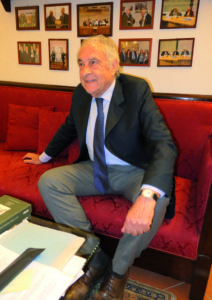
Ma anche da editore c’è qualcosa che la lega all’isola.
“Immagino si riferisca alla collana Salimura, un’idea partorita insieme alle amiche Anna Maria Boniello e Vittoria Marino. Come riporta il titolo, questo percorso editoriale viene sviscerato proprio all’interno delle antiche mura cintuarie che proteggevano il centro abitato di Capri, e vuole accompagnare il lettore attraverso le diverse tappe di crescita che hanno caratterizzato il territorio, raccontando così le sfaccettature di questa isola baciata dalla bellezza attraverso i sapori, i colori e le tante testimonianze di chi l’ha vissuta ed amata. Come quella del cardiochirurgo Maurizio Cotrufo che, con il suo “pescatore gentiluomo”, ci regala un mondo dove è celebrata la vita libera ed essenziale, a contatto con la natura ed i suoi elementi”.
Lei deve amare molto quest’isola, dunque ci sono luoghi a cui si sente più legato?
“Indubbiamente la Migliera, Mesola e Cetrella. Sa, non sono un fervente cattolico, ma a settembre mi piace partecipare alle prediche mattutine di Monsignor Vincenzo De Gregorio che ci porta tutti in processione verso la chiesa di Cetrella e poi ne presiede la messa delle sette. È un momento di straordinaria intimità che riesce a mettermi in pace con il mondo e, probabilmente, anche con Dio: l’effetto ammaliatore della sirena caprese, per me, sta proprio nella passeggiata in questi luoghi unici a picco sul mare”.
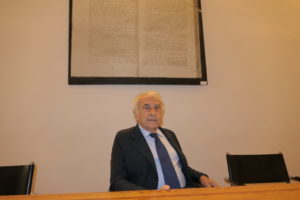 THE ORIGINS OF MEDITERRANEAN CIVILIZATION IN ANACAPRI
THE ORIGINS OF MEDITERRANEAN CIVILIZATION IN ANACAPRI
He is Neapolitan by birth and adopted by Anacapri”. Is the Professor Mario De Dominicis, entrepreneur and pillar of the Editoriale Scientifica publishing house.
“I’ve always had a special relationship with the ‘Blue Island’ and I’ve been going there regularly since 1966. With my wife we used to book a room at the Capri Palace, which at that time was still known as the Europa Palace. Then, in the 1970s, we bought a house, in Anacapri of course, which by then had captured our sight and hearts”.
Mario De Dominicis is a man of culture, former professor of the Faculty of Law at the University of Salerno, but also an extraordinary sportsman. A fanatic supporter of the Napoli football team, passionate about cycling and sport in general, “as a way to have fun together”, his study in the Via San Biagio dei Librai in Naples is packed with memories which embrace more than his institutional and professional achievements.
“I’m a vast reservoir of emotions, I love working in an environment that is familiar to me, that stimulates sensations of growth. My entire life is here – pointing to a photo which shows him participating in a student tournament with the Sannazaro del Vomero secondary school, then quickly passing to the magazine covers depicting the Coppi and Bartali cycling champions of old – my idea of gatherings, especially sporting ones, was that they should be innocent virtuous occasions for coming together. Not like now with all these social networks and techno devilry”.
How would you explain the secret of your company’s success?
“The fundamental choice that guided the development of Editoriale Scientifica was to rigorously specialise in certain areas of legal research. We founded the publishing house in 1975 with a dual goal, that of offering an editorially and graphically well-crafted product while at the same time offering a focused and valid contribution to research endeavour and the in-depth study of carefully selected topics. Thanks to the meticulous work of my son Alfredo and all the staff who have worked with us over the years, we can boast a general catalogue of over five hundred titles, which is no small achievement for the times we are experiencing today”.
Returning to Capri, you have often linked your professional commitments to your experiences on the Island.
“Let’s say that the two are frequently intertwined. In 1990, together with friends and colleagues, we created ‘Civiltà del Mediterraneo’, a consortium of southern universities that had the Capri Palace as its headquarters. Our seminars were attended by scientific and humanist scholars of international fame, but also singers such as Lucio Dalla and Gino Paoli honoured us with their musical and cultural presence. We discussed the problems of the Mediterranean area, from historical, ecological, economic and artistic perspectives. We have even held competitions for students and graduates and awarded several scholarships”.
But also from the publishing side, there is something else that binds you to the Island.
“I presume you refer to the Salimura series, an idea I developed together with my friends Anna Maria Boniello and Vittoria Marino. As the title evokes, this editorial journey evolves within the ancient walls that protected the town of Capri, and aims to accompany the reader through the different stages of growth that have characterised the territory through the ages. It recounts the multifaceted aspects this island, blessed by beauty, through its flavours, colours and the many testimonies of those who have lived on it and loved it. Like the story of the heart surgeon Maurizio Cotrufo who tells of his “gentleman fisherman”, presenting us with a world where free and essential life is celebrated, in contact with nature and its elements”.
You must love this island a lot, so are there any special parts of it for which you have a particular fondness?
“Undoubtedly the Migliera, Mesola and Cetrella areas. You know, I’m not a staunch Catholic, but in September I like to attend the morning sermons of Monsignor Vincenzo De Gregorio who takes us all in procession to the church of Cetrella and then says the seven o’clock mass there. It is a moment of extraordinary intimacy that manages to put me at peace with the world and, probably, also with God: for me, the captivating effect of Capri’s siren precisely consists of walking along these unique paths overlooking the sea”.

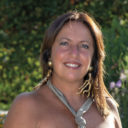
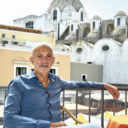
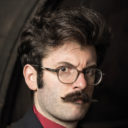



No Comments